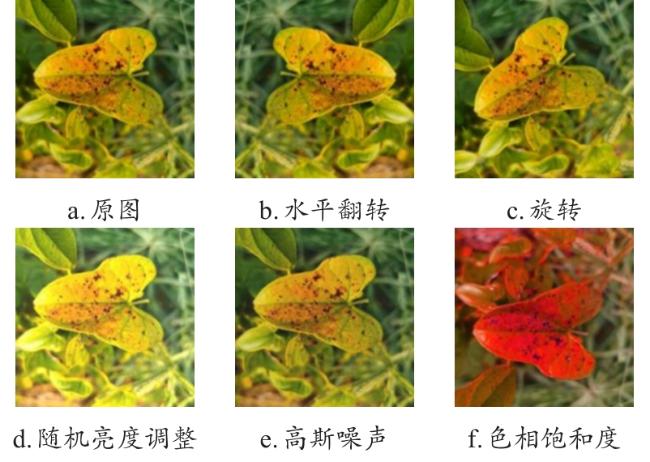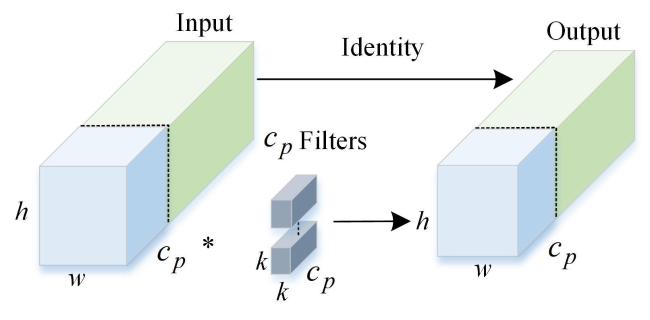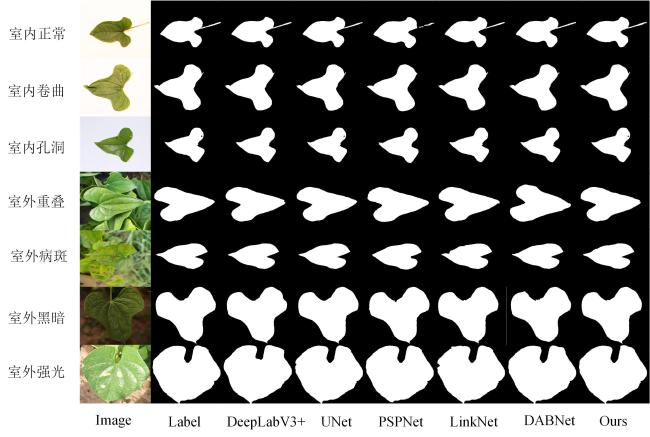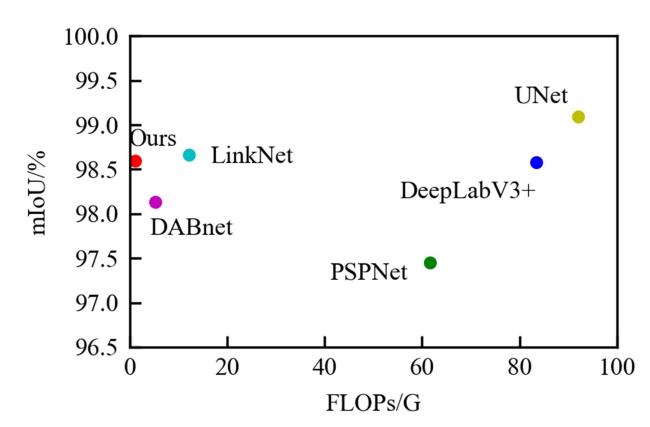[Objective] Crop leaf area is an important indicator reflecting light absorption efficiency and growth conditions. This paper established a diverse Chinese yam image dataset and proposesd a deep learning-based method for Chinese yam leaf image segmentation. This method can be used for real-time measurement of Chinese yam leaf area, addressing the inefficiency of traditional measurement techniques. This will provide more reliable data support for genetic breeding, growth and development research of Chinese yam, and promote the development and progress of the Chinese yam industry. [Methods] A lightweight segmentation network based on improved ENet was proposed. Firstly, based on ENet, the third stage was pruned to reduce redundant calculations in the model. This improved the computational efficiency and running speed, and provided a good basis for real-time applications. Secondly, PConv was used instead of the conventional convolution in the downsampling bottleneck structure and conventional bottleneck structure, the improved bottleneck structure was named P-Bottleneck. PConv applied conventional convolution to only a portion of the input channels and left the rest of the channels unchanged, which reduced memory accesses and redundant computations for more efficient spatial feature extraction. PConv was used to reduce the amount of model computation while increase the number of floating-point operations per second on the hardware device, resulting in lower latency. Additionally, the transposed convolution in the upsampling module was improved to bilinear interpolation to enhance model accuracy and reduce the number of parameters. Bilinear interpolation could process images smoother, making the processed images more realistic and clear. Finally, coordinate attention (CA) module was added to the encoder to introduce the attention mechanism, and the model was named CBPA-ENet. The CA mechanism not only focused on the channel information, but also keenly captured the orientation and position-sensitive information. The position information was embedded into the channel attention to globally encode the spatial information, capturing the channel information along one spatial direction while retaining the position information along the other spatial direction. The network could effectively enhance the attention to important regions in the image, and thus improve the quality and interpretability of segmentation results. [Results and Discussions] Trimming the third part resulted in a 28% decrease in FLOPs, a 41% decrease in parameters, and a 9 f/s increase in FPS. Improving the upsampling method to bilinear interpolation not only reduces the floating-point operation and parameters, but also slightly improves the segmentation accuracy of the model, increasing FPS by 4 f/s. Using P-Bottleneck instead of downsampling bottleneck structure and conventional bottleneck structure can reduce mIoU by only 0.04%, reduce FLOPs by 22%, reduce parameters by 16%, and increase FPS by 8 f/s. Adding CA mechanism to the encoder could only increase a small amount of FLOPs and parameters, improving the accuracy of the segmentation network. To verify the effectiveness of the improved segmentation algorithm, classic semantic segmentation networks of UNet, DeepLabV3+, PSPNet, and real-time semantic segmentation network LinkNet, DABNet were selected to train and validate. These six algorithms got quite high segmentation accuracy, among which UNet had the best mIoU and the mPA, but the model size was too large. The improved algorithm only accounts for 1% of the FLOPs and 0.41% of the parameters of UNet, and the mIoU and mPA were basically the same. Other classic semantic segmentation algorithms, such as DeepLabV3+, had similar accuracy to improved algorithms, but their large model size and slow inference speed were not conducive to embedded development. Although the real-time semantic segmentation algorithm LinkNet had a slightly higher mIoU, its FLOPs and parameters count were still far greater than the improved algorithm. Although the PSPNet model was relatively small, it was also much higher than the improved algorithm, and the mIoU and mPA were lower than the algorithm. The experimental results showed that the improved model achieved a mIoU of 98.61%. Compared with the original model, the number of parameters and FLOPs significantly decreased. Among them, the number of model parameters decreased by 51%, the FLOPs decreased by 49%, and the network operation speed increased by 38%. [Conclusions] The improved algorithm can accurately and quickly segment Chinese yam leaves, providing not only a more accurate means for determining Chinese yam phenotype data, but also a new method and approach for embedded research of Chinese yam. Using the model, the morphological feature data of Chinese yam leaves can be obtained more efficiently, providing a reliable foundation for further research and analysis.






















